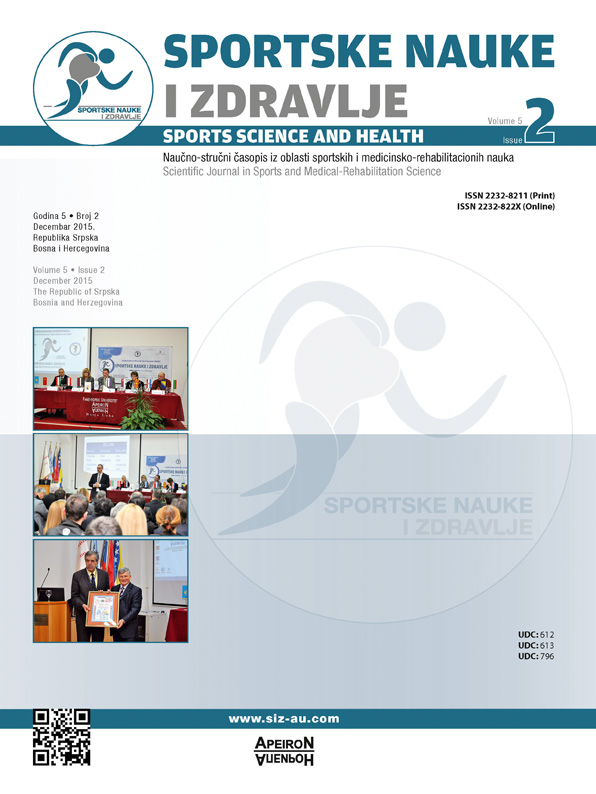Workload Impact on Carpal Tunnel Syndrome Growth / Uticaj radnog opterećenja na razvoj sindroma karpalnog tunela
DOI:
https://doi.org/10.7251/SSH1502134BAbstract
Carpal tunnel syndrome (CTS) is the most common compression neuropathy that affects 3 to 6% of people in the general population. It represents one of the most significant health and financial problems in the working population. Our study included 98 patients. The women were 77 (78.6%) and men 21 (21.4%). Age has averaged 52 ± 11.1 years. The respondents were employed in sectors of the economy in jobs at high risk for the occurrence of CTS: agriculture and livestock breeding, services, construction, food production and public administration. The respondents were subject of a detailed physical examination and electromyoneurographic tests (EMG) to confirm the diagnosis and level of neurogenic damage. It was found that the hypotrophy and weakness of thenar muscle and a positive Phalen’s sign showed statistically highly significant difference in relation to the level of neurogenic lesions.Downloads
Published
2016-02-02
Issue
Section
Чланци
